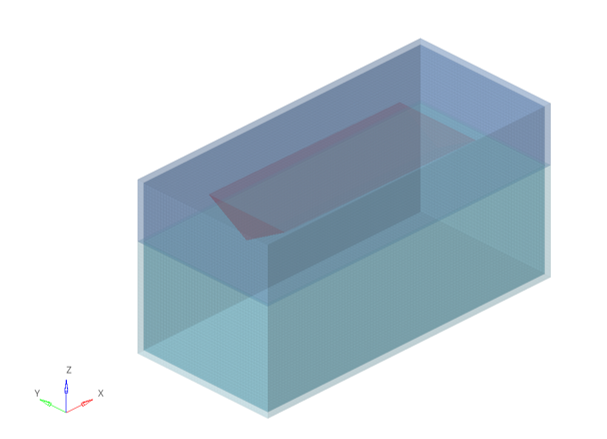RD-HM-T: 1030 Boat Ditching with Boundary Elements
The objective of this tutorial is to simulate Boat Ditching with Boundary Elements to represent continuous water using Multi-material law (LAW51).

Figure 1.
- Step 1: Load the load the initial model
- Step 2: Define material
- Step 3: Define property
- Step 4: Set contact
- Step 5: Create rigid body
- Step 6: Set loading
- Step 7: Create boundary conditions
- Step 8: Create Engine setup
- Step 9: Export solver deck and run model
- Step 10: Check the results
Model Description
- UNITS: Length (mm), Time (ms), Mass (kg), Force (kN) and Stress (GPa)
- Simulation time: Engine [0 – 30.01]
- Fluid material (include water inlet and outlet) with /MAT/LAW51
- Fluid Lagrangian contact with /INTER/TYPE18
Prerequisites
To run this simulation, you will need access to a licensed version of Radioss. You will need an internet connection to watch the video tutorials and download the files.